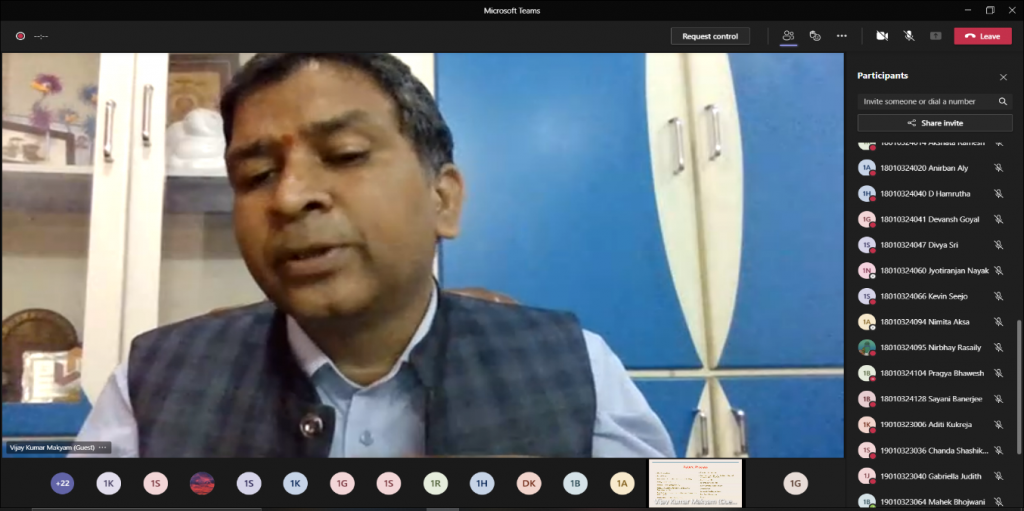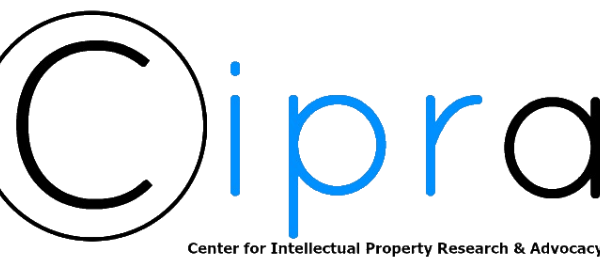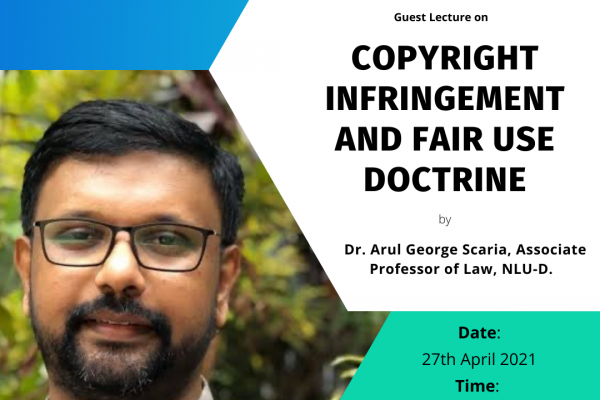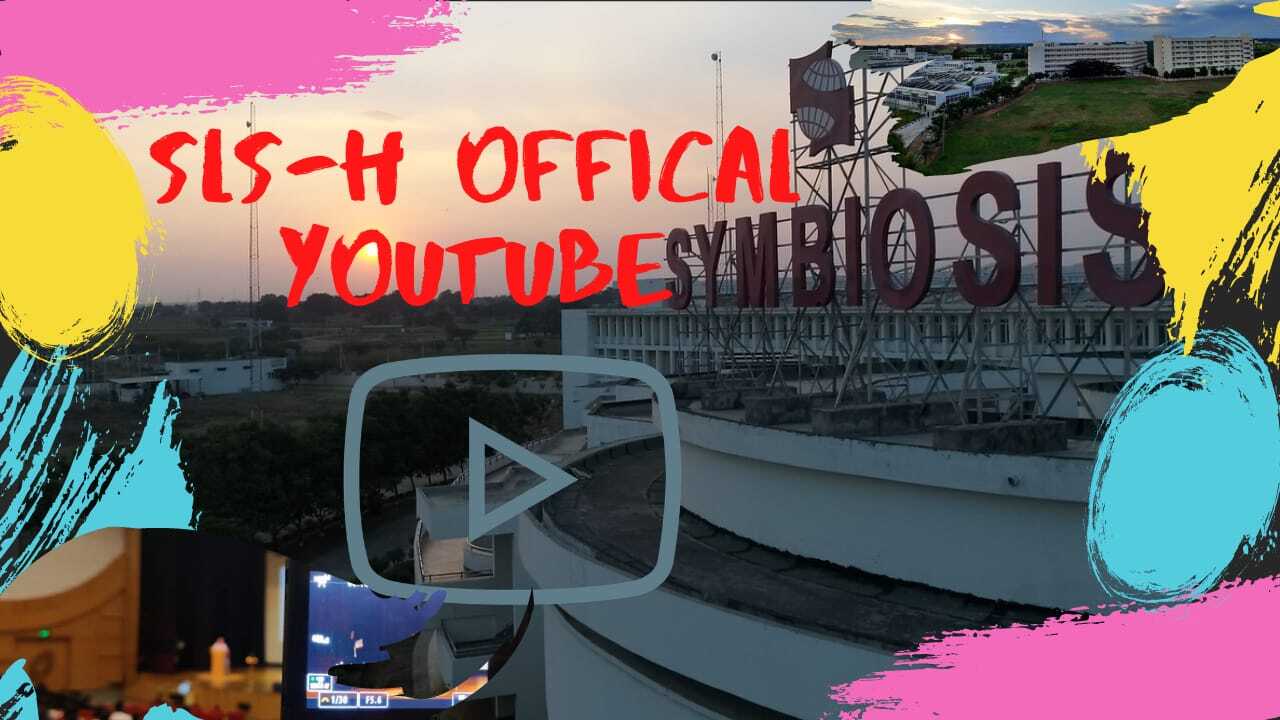EVENT REPORT: GUEST LECTURE ON PATENT SPECIFICATION AND DRAFT OF CLAIMS
ABOUT THE SPEAKER
The speaker for the lecture was Mr. Vijay Kumar Makyam, Technical Member (Trademarks) – Erstwhile Intellectual Property Appellate Board (IPAB), Government of India. He is a Postgraduate in Law with a specialization in Intellectual Property Rights and a Master of Science in Information Technology. He has been practicing intellectual property laws for the past 15 years. He is a Registered Patent and Trademark Agent for Erstwhile Indian Patent and Trademark Office and has filed and prosecuted Patent and Trademark Applications and Oppositions before the Controller of Patents and Trademark Registrar in India. He has also coordinated the filing of Patent and Trademark Applications in other countries including the USA, EU, Australia, Malaysia, Singapore, Sri Lanka, South Korea, South Africa, UAE and Japan. In addition to this, he has been instrumental in organizing various Seminars, Training Sessions and Moot Court Competitions.
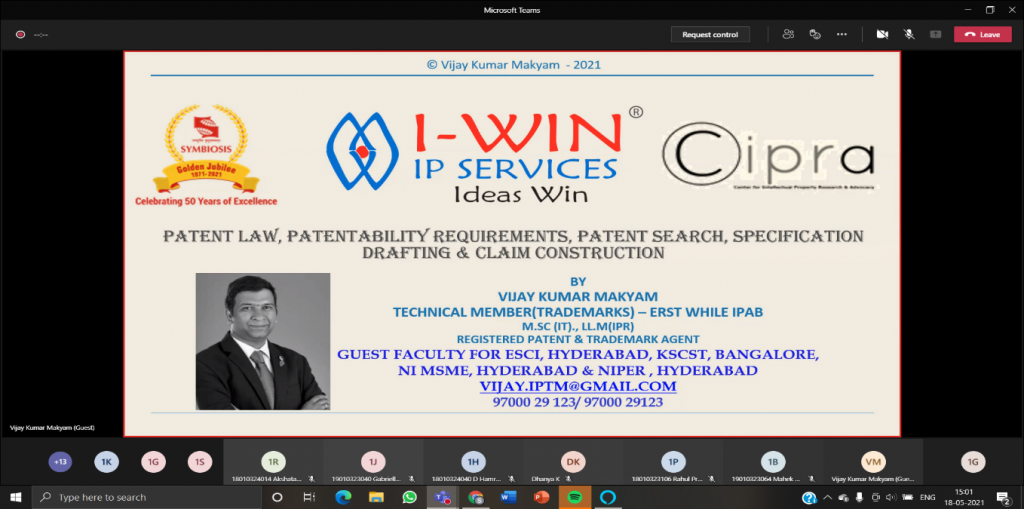
ABOUT THE EVENT
During the webinar, Mr. Vijay Kumar Makyam provided with the wide range of patent specifications aspects such as the requirements for grant of patents, registration and various other procedures for the draft and claims of patents. The 5 requisites for the grant of patents are clearly explained in the webinar which includes, the disclosure of the invention (Section 10 Rule 13 and Section 2(1) (ac), Novelty of the patent, the innovation has to be inventive, Utility of the innovation and prior use of the innovation. These are essential for the grant of patents and non-fulfilment of the same can be a ground for the disqualification of the same. The next major object focussed by the sir is the necessity of the patent search and importance of the R&D. It is very necessary to ensure the nonexistence of the opposition for the same.
This search is important to know about the merger and acquisitions of the companies, claims of the infringement and oppositions/revocations. It is also important to fill and submit form 27 which is a working statement of the patent. The failure to do the same can also lead to the revocation of patent. The drafting of the specification is an important aspect of the patent preparation. The first step explained is to schedule an inventor meeting and then make a first draft of the same. Sir has focussed on the proof reading as it is very necessary to understand the terminology and find out the mistakes of visualisation. The novelty and future utility of the claim has to be visualised for the competitor analysis and productivity of the same. Sir has further explained the specifications of the claim with a tea pot example. The proposed claim has to be compared with the pre-existing similar ones and has to be drafted accordingly. The patent specification is explained in two major parts, such as Specification and Drawings. The claims have to be precise and definite to maintain the novelty and specific recognition. In the next part it is explained about the contents necessary for the patent specifications. The contents include “Title, Background of the Invention, Summary of the Invention, Description of the drawing, Detailed description, Claims, Abstract (150 words) and Drawings”.
In the second part of the session, sir has specifically focussed on the claims and elements of the same. The major objective of the claim is to explain the scope of the invention with conciseness and foresight detailed utility of the same. The characteristics, elements (Preamble, Transition, Body) and requisites of the claim are explained in a very detailed manner. The preamble of the claim has to be crystal clear to understand the necessity and novelty of the claim. The transition of the claim should specify the phrase of transition to be either open ended or the closed one. The body of the patent specifies the operable and relatability of the same. These elements of the claim have to be novel, distinctive features and drafting of the claim should show the scope of utility for the future. For explaining this various example such as cheese burger, game devices are taken to draft the invention. There are four major rules of patent which includes the antecedents, structural connection, functional expressions and negative limitations. The importance of the antecedents and specifications of the dependent claim and method claims are explained in a detailed manner. It is specified that there can be various multiple dependent claims and they can also be independently accepted instead of the original claim. Further, the functional expression is explained as an important rule to specify the claim and relate the same with preamble. The Jepson claim, Markush groups specifying the elements and parts are explained in a detailed manner. The general procedures of the patent claims are necessary to be drafted maintaining the differentiation of the design and claimed invention. The visualisation of a particular product is necessary to make a subjectively and objectively detailed patent claim. The doctrine of equivalence and balance of the infringement has to be maintained while filing a claim and necessitating the requirements regarding the same. Concluding the session, the limitations of the claim are explained along with answering various questions posted by the students.
OUTCOME
The webinar organized on 18th of May from 3pm to 6pm was a successful and fruitful session with over fifty students having an informative and outstanding experience. The objective of the session was the understanding the concept of patent specifications and draft of various claims related to the same. The claims and necessities of the same are defined and explained in a very comprehensive manner. Along with this, various case laws and examples are explained in a detailed manner to understand the registration of patents and the necessities of claims. The rules of the claim drafting along with the objectives and necessary developments are explained in a detailed and constructive manner. Various examples were quoted by the speaker to understand the intricacies present in the claim drafting and patent specifications. This session was not only informative but also interactive. The questions related to the topic were answered by the guest speaker with various illustrations and recent developments. The webinar was the perfect mix of information and examples with pictorial representation to keep the participants enraptured throughout. A balanced approach to the subject has been provided by the speaker. Speaker has provided all the basics for a refresher while giving detail ins and outs of the topic in the second half. The session was adjourned successfully with everyone having a great learning experience, having a clear idea about the industrial design and its future prospects.
